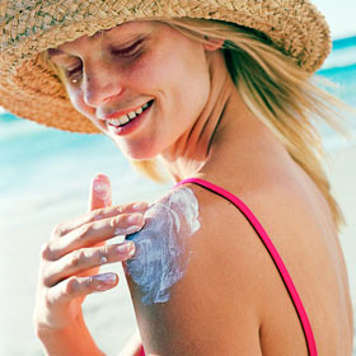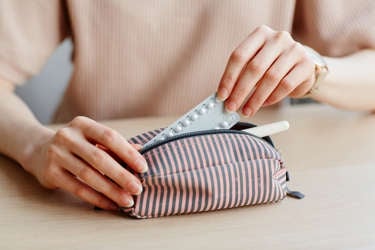
Did you know that your skin is your body’s largest organ?
You will need to be careful while outdoors in the sun, especially during the hot summer months. There are three main things to think about:
- drinking enough fluids
- protecting your skin
- protecting your eyes.
Keeping a healthy level of fluids in your body
Summertime heat can cause you to lose extra fluid through your skin by sweating. High humidity makes people more likely to sweat.
You need to drink at least two extra cups (500 mL) of fluid on days when you’re out in the sun. This makes up for the extra water you lose when you’re hot.
- Extra fluids stop you from getting dehydrated.
- A healthy level of fluids helps your kidneys work much better.
- Having enough fluids means you are less likely to suffer from heat exhaustion.
Signs of heat exhaustion and dehydration
- Thirst
- Tiredness
- Stomach or leg cramps
- Cool, moist skin.
Know how much fluid you should drink on a regular day and how much to drink when it is hot and humid outside. Ask your transplant team, paediatrician or family doctor.
Protecting your skin
All of us need to protect our skin from the sun, even if we have darker skin. Children and teens are more sensitive to the ultraviolet (UVA and UVB) rays of the sun because their skin is thinner than that of adults.
As a transplant patient, you need to be extra careful. You have a greater risk of developing skin cancer because of the medications you are taking. Some of your medications will also cause you to burn more quickly. This often results in painful sunburn or blisters – something you can definitely do without!
Choosing and wearing the right sunscreen
- Wear sunscreen that is certified by the Canadian Dermatology Association (CDA). This type of sunscreen:
- protects against UVA and UVB rays
- has a sun protection factor (SPF) 30 or greater
- is hypoallergenic and non-irritating (good for sensitive skin).
- Apply sunscreen to dry skin about 20 to 30 minutes before going outside. It needs time to sink into your skin so that it works properly.
- Apply sunscreen to your ears, nose, and neck – in fact, all exposed skin.
- Re-apply sunscreen every two hours, if possible, or sooner if you have been swimming or if you are sweating a lot (even if the sunscreen is waterproof).
- Wear lip balm with sunscreen SPF 30 or higher. Re-apply it every two hours, if possible (or sooner if you lick your lips a lot), and after eating.
- If you need to wear insect repellent (bug spray), apply the sunscreen first. To give the sunscreen enough time to sink into your skin, wait 20 minutes before applying the repellent.
- DEET (the active chemical in insect repellent) makes sunscreen less effective. This means you will have to re-apply the sunscreen more often than usual.
- Avoid combination sunscreen/insect repellent products. You will need to apply sunscreen every two hours, but there is no need to apply DEET this often.
- Check the expiry date on your sunscreen products regularly. Expired products will not protect you properly.
- When you are outside, along with your sunscreen, wear:
- a hat with a wide brim (7.5 cm or 3 inches wide)
- loose, lightweight clothes that cover as much of the body as possible.
Protecting your eyes
It is important to protect your eyes from the sun’s damaging rays. Ultraviolet radiation from the sun can burn the front of the eye, similar to sunburn on the skin, and, of course, burn the skin around your eyes, including your eye lids. Over a longer time, unprotected eyes can develop cataracts (clouding of the lens), permanent vision loss and skin cancers on eyelids and the surrounding areas. When you are outside, wear sunglasses with broad spectrum ultraviolet (UV) ray protection (99-100% UVA and UVB protection).
Other sun safety tips to consider
- Check the daily UV index. This tells you how quickly unprotected skin will burn. Anything greater than 3 means that you will need to use sun protection.
- Avoid direct sun between 10am and 2pm – this is when the sun’s rays are strongest and can do the most harm.
- If you don’t have a watch, look at your shadow. If it is shorter than you are, it’s time to stay in the shade!
- If you are outside during a school recess or lunch break, wear protective clothing or sunscreen if the school property is not shaded.
- Remember that water, sand and snow strengthen and reflect the sun’s rays.
- Never use tanning beds or lamps. These can give off two to five times more UVA radiation than natural sunlight. This is not safe.
Checking your skin for any unusual changes
Your medicines after transplant put you at greater risk of burning in the sun and getting skin cancer, so it is really important to keep track of any unusual changes in your skin.
Risk factors for skin cancer include:
- fair skin, light eyes
- a history of severe sunburns or of burning easily
- a history of skin cancer or melanoma (in the person or their family)
- use of tanning beds
- lots of moles or unusual moles
- taking anti-rejection medicines.
You can keep track of any changes in your skin by doing a regular skin inspection or skin check. Everyone should do a skin check every three months. A good way to remember is to do one at each change of season.
Know the ABCDEs of skin inspections!
Normal moles are symmetrical (one side is similar to the other), have a regular border and are usually one colour. They also are reasonably small (less than 6mm). Use the ABCDE guideline in the following video and further below to see if any of your moles need to be checked out by your doctor.
- Asymmetry: Look for spots or moles where the shape is different on one side than the other.
- Border: Check if the edge of the spot or mole is irregular or ragged.
- Colour: See if you can find different colours within the spot or mole - parts may be brown, black, red, grey, or white.
- Diameter: Check the width of the mole - regular moles grow with you, but cancerous moles grow faster than you grow or are more than 6 mm wide, about the size of a pencil eraser.
- Evolution: See if the mole or spot evolves, or changes, over time – look for changes in colour, size, or shape and whether the mole is itchy or tender or tends to bleed.

What you will need to check your moles
- A well-lit area with a mirror hung on the wall or a door
- A hand-held mirror
- A hair dryer (to separate your hair – often easier to do when your hair is wet)
- Two chairs or stools
- A pen and paper so you can write down what you find
It’s also a good idea to ask someone you trust to help you do the inspection.
What to do if you see a mole that concerns you
- Take a picture and compare it with what you find during your next skin inspection.
- Write down the position, size and shape of the moles.
- Talk to your doctor if you are worried about any moles or spots on your body.
Watch this skin inspection video to see exactly how to do the skin check.






